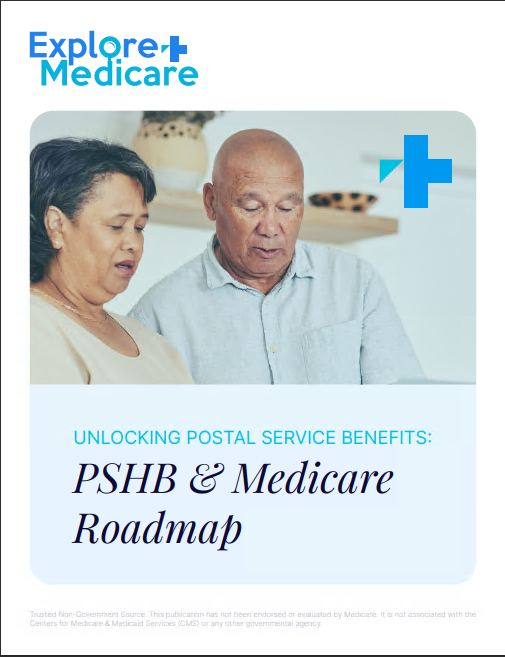Key Takeaways
-
Understanding Medicare eligibility involves knowing more than just your age; factors such as employment history and timing of enrollment can impact your coverage and costs significantly.
-
Missing crucial Medicare enrollment windows could result in penalties and gaps in healthcare coverage, so it’s important to plan ahead and stay informed.
Medicare Eligibility Basics: It’s More Than Just Age
When you hear “Medicare eligibility,” you probably think it’s as simple as turning 65. While age is a major factor, there’s more to it. Understanding these extra details can make a big difference in your healthcare and financial plans.
Age Matters, But It’s Not Everything
Yes, you’re eligible for Medicare at 65, but your work history and health status can also play significant roles. Let’s dive deeper into what else affects your eligibility.
Work Credits and Medicare Part A Eligibility
Medicare Part A covers hospital stays, hospice care, and some skilled nursing facilities. You’re automatically eligible at 65 if you or your spouse have worked at least 40 quarters (approximately 10 years) and paid Medicare taxes during that time.
However, if you haven’t met this requirement, you can still enroll by paying a monthly premium. In 2025, premiums for Medicare Part A are $518 per month if you’ve paid Medicare taxes for fewer than 30 quarters, or $284 if you’ve paid taxes for 30-39 quarters.
Disability and Medicare Eligibility
If you’re under 65 and receiving disability benefits from Social Security or the Railroad Retirement Board for at least 24 months, you’re eligible for Medicare. This means you don’t need to wait until you’re 65 to gain Medicare coverage.
Special Conditions and Early Eligibility
Some situations let you qualify for Medicare before 65. These conditions include:
-
End-Stage Renal Disease (ESRD): If you have permanent kidney failure requiring dialysis or a transplant, you can qualify regardless of age.
-
Lou Gehrig’s Disease (ALS): If you have ALS, you’re automatically eligible for Medicare when your Social Security Disability Insurance (SSDI) begins, typically within a month of your diagnosis.
Enrollment Periods and Why Timing Is Everything
Knowing when and how to enroll can be just as important as knowing if you qualify. Missing deadlines can lead to penalties or delays.
Initial Enrollment Period (IEP)
Your Initial Enrollment Period is the most crucial window. It starts 3 months before you turn 65, includes your birthday month, and continues for 3 months afterward, totaling 7 months. This is your first opportunity to enroll without penalties.
General Enrollment Period (GEP)
If you miss your Initial Enrollment Period, the General Enrollment Period is your next chance. It runs from January 1 to March 31 every year, but coverage won’t start until July 1. You may also face late-enrollment penalties if you enroll during this period.
Special Enrollment Periods (SEP)
Life events, like losing employer-sponsored coverage, can qualify you for a Special Enrollment Period. Generally, you have an 8-month SEP after employment or employer coverage ends to enroll in Medicare Part B without penalties.
Avoiding the Part B Penalty Pitfall
Medicare Part B, covering doctor visits and outpatient care, requires careful timing. Missing enrollment deadlines can permanently increase your monthly premiums by 10% for each 12-month period you were eligible but didn’t enroll. That means delays can become costly over time.
Considering Employer Coverage and Medicare
If you’re still working at age 65, you have some choices to make. If your employer has fewer than 20 employees, Medicare becomes your primary coverage, and you should enroll during your IEP. However, if your employer has 20 or more employees and offers health coverage, you might delay Medicare Part B enrollment without penalty until your employment or group coverage ends.
It’s important to weigh the costs and benefits of your employer coverage versus Medicare. Consider premiums, deductibles, and how your coverage meets your healthcare needs.
Medicare Parts: Know What You’re Signing Up For
Understanding Medicare eligibility also means understanding the different parts of Medicare:
-
Medicare Part A (Hospital Insurance) covers inpatient hospital stays, skilled nursing facility care, hospice, and some home health care.
-
Medicare Part B (Medical Insurance) covers doctor visits, outpatient care, preventive services, and some home health care.
-
Medicare Part D (Prescription Drug Coverage) helps cover prescription medications, featuring an annual deductible (up to $590 in 2025) and a new $2,000 annual out-of-pocket cap.
-
Medicare Advantage (Part C) combines Part A, B, and often Part D coverage, usually including additional benefits like dental, vision, and hearing.
Each part has its own enrollment windows and costs, so knowing your healthcare needs and budget will help you choose wisely.
Income Considerations: IRMAA and Its Impact
Another key factor in Medicare eligibility that’s easy to overlook is the Income-Related Monthly Adjustment Amount (IRMAA). If your modified adjusted gross income (MAGI) from two years prior (2023) exceeds certain thresholds ($106,000 for individuals or $212,000 for couples filing jointly in 2025), you’ll pay more for Medicare Parts B and D.
Keeping this in mind can help you avoid surprises and better budget your healthcare expenses.
Navigating Medicare Advantage and Supplemental Insurance
Medicare Advantage plans (Part C) are popular due to additional benefits not covered by Original Medicare. In 2025, most Medicare Advantage plans offer dental, vision, and hearing coverage, but details and costs vary significantly by region and provider.
Supplemental insurance, or Medigap, covers the gaps in Original Medicare, such as copayments, coinsurance, and deductibles. Understanding how these plans interact with Medicare can save you from unexpected medical costs.
Prescription Drugs: Understanding Medicare Part D Changes
As of 2025, Medicare Part D prescription drug coverage has introduced a major change: a $2,000 annual out-of-pocket spending cap. Once your medication expenses hit this limit, you won’t have additional costs for covered drugs for the remainder of the year.
Additionally, a new Medicare Prescription Payment Plan lets you spread out-of-pocket expenses into monthly payments over the year, providing financial relief if you have high drug costs.
Medicare Isn’t Automatic for Everyone
Many Americans assume Medicare enrollment is automatic, but that’s not always true. If you’re receiving Social Security benefits before age 65, you’ll be enrolled automatically. Otherwise, you must actively enroll during your IEP or face penalties.
The Cost of Waiting: Late-Enrollment Penalties Explained
Late enrollment penalties can significantly impact your budget. For instance, Medicare Part B has a permanent 10% premium increase for each 12-month period you delay enrollment after becoming eligible. Medicare Part D also has penalties if you go more than 63 days without credible prescription drug coverage after your IEP ends.
Keeping Your Coverage Current: Annual Reviews Are Essential
Medicare isn’t a “set-it-and-forget-it” program. Every year, from October 15 to December 7, you have the opportunity to make changes during Medicare’s Annual Enrollment Period (AEP). Reviewing your plan annually helps ensure you have the coverage you need at the best price.
Making the Right Medicare Choices
Medicare can seem overwhelming, but understanding the nuances of eligibility, enrollment timelines, and how each part works can simplify the process. Staying informed about these details is key to maximizing your benefits and avoiding unexpected costs.
Take the Next Step in Your Medicare Journey
Knowing the ins and outs of Medicare eligibility and enrollment empowers you to make informed decisions. For personalized guidance, contact a licensed agent listed on this website today.









